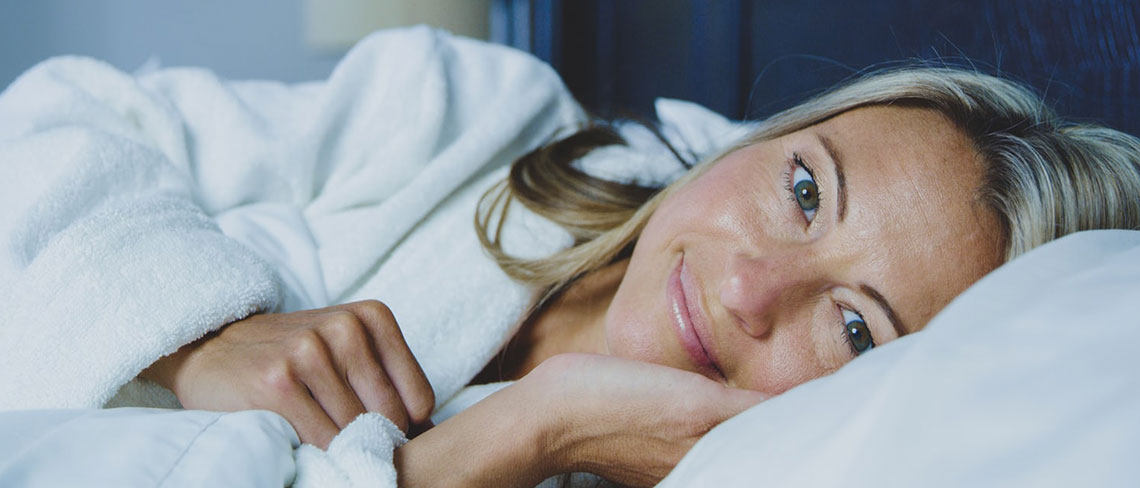
Tempur highlights the importance of good sleep hygiene this winter.
Shorter daylight hours, dark mornings, gloomy weather… it’s no wonder many of us feel the winter blues.
While it’s normal to feel a bit low and more lethargic during winter, some of us can experience a more serious condition, known as Seasonal Affective Disorder, or SAD.
Symptoms of SAD typically include low mood and general sluggishness, increased irritability, oversleeping, and weight gain. The condition affects roughly 1 in 15 people in the UK and, whilst some experience symptoms in the autumn, is most common through the winter.
During colder months, when there is less sunlight, our bodies absorb less Vitamin D, which is crucial for the optimum production of brain chemicals, including melatonin (responsible for happiness and a positive mood) and serotonin (that makes us sleepy).
Tempur UK Managing Director, Tobin James, says: “Many of us will relate to feeling more sluggish and tired during winter; we may experience low moods and find it harder to concentrate. SAD is a recognised medical condition and if you’re experiencing prolonged symptoms or ongoing poor sleep, you should seek out professional help.
“However, there are some simple lifestyle changes people can make to tackle these symptoms and sleep is the best place to start. From ensuring a good sleep routine and implementing a wind-down process to making changes to our bedroom environment, there are a number of ways to ensure better sleep during winter.”
Here, premium mattress brand, Tempur, investigates ways to combat the feelings caused by SAD with its dedicated sleep guide for better physical and mental health.
1. Head outdoors
In winter, our usual sleep cycle is affected. This is because lack of daylight impedes the body’s receptiveness to sunlight as a natural indicator of when to wake up and sleep. To counteract this, head outdoors as much as possible to make the most of the available daylight hours and give yourself a much-needed dose of Vitamin D.
2. Bedtime routine
One of the most common symptoms of SAD is sleep problems. This can range from finding it difficult to fall asleep to sleeping way too much. As a general rule, adults should aim for 7-9 hours of sleep every night, and children between 10-12 hours. We are creatures of habit and our bodies crave routine. Going to sleep and waking up at the same time everyday will optimise your quality of sleep and you will feel more naturally tired with a set bedtime.
3. Be wary of oversleeping
SAD can also cause hypersomnia or oversleeping, which can be just as detrimental to your health as not getting enough sleep. In fact, oversleeping is much more common in SAD sufferers, affecting as many as 80%. Crucially, however, the efficiency of this sleep is much lower than that of non-sufferers, with the amount of time spent in deep sleep significantly reduced. Other symptoms of hypersomnia include difficulty waking up in the morning, grogginess and difficulty concentrating.
So, while it can be tempting to go into hibernation mode in the darker, winter months you should make sure you’re not sleeping longer than you would at any other time of year – 7-9 hours a night is adequate.
4. No napping
While it can be tempting to have a quick doze in the afternoon or on the way home from work, if you’re already struggling with sleep at night-time these early evening ‘power naps’ can actually do more harm than good. Napping can interrupt the natural hormone surges that set us up for our main sleep, so it’s best to not make them a regular occurrence.
5. Vitamin D enhanced diet
Lack of sunlight can cause a deficiency in Vitamin D, which is crucial for a healthy immune system, preventing tiredness and strengthening bones. When natural daylight is reduced, we can supplement our diet with Vitamin D rich foods. Eat more oily fish, such as salmon or mackerel, and add more leafy green vegetables and eggs into your diet.
6. Wind-down routine
What we do in the run up to sleep can have a real impact on the quality and quantity of our slumber. A relaxing down-time routine is a simple way to ensure we fall asleep quicker. Put away electronic devices at least half an hour before sleep, drink a soothing herbal tea and read in bed to increase feelings of sleepiness. Add a sprig of lavender to your pillow is a natural sleep aid too.
7. Bedroom design
Your bedroom should be optimised for sleep and a place that helps you to relax and unwind. Opt for soft lighting from lamps, rather than harsh overhead lighting, invest in black-out curtains to prevent any chinks of light and choose soothing wall colours and wallpaper, rather than anything too bright or distracting. Adding houseplants will help ensure better air quality and ensure the room is well-ventilated.
8. Block sound and light
External factors, such as street lights or busy roads, can impact everyday sleep. Use earplugs to dull background noise and a sleep mask if outside light is causing problems. Your bedroom should be a little cooler than the rest of the house for optimal sleep, between 18-20 degrees. Feeling too hot or cold means you’re very likely to wake in the night, so find a temperature that best suits you. Swap your summer quilt for a heavier winter duvet and add blankets for extra cosiness.
9. Still can’t sleep?
Try not to worry about the occasional poor night’s sleep, but if bad sleep is a regular occurrence seek advice from a doctor. If you’re lying in bed with your mind racing, get up and move to another room and do a gentle activity, such as reading or journaling. Once you start to feel sleepy again, return to your bedroom for sleep. It’s important to have a different space away from your bedroom if you’re wide awake so your body associates the bedroom with sleep.
10. Don’t let pain get in the way of a good night’s sleep
Investing in a quality mattress or pillow really can make all the difference to your sleep and you really do need to test them out in order to find the product that provides the correct level of support for you. A good mattress will gently support your entire body while keeping your spine in a neutral position. This will not only help improve your quality of sleep – the more comfortable and supported you are, the less you will toss and turn – but will also help muscles recover overnight and alleviate any aches and pains.
For more information on Tempur, visit www.tempur.co.uk
-Ends-
For further press information, please contact:
Elsa Findlay | Jo Kendall | Julie Aguilera
Rooster PR
T: +44 (0)20 3440 8930
E: [email protected]
About Tempur
Tempur researches, develops, engineers, manufactures and distributes mattresses, pillows and other sleep products to improve the sleep experience worldwide.
Tempur mattresses and pillows are made from a formulation of the brand’s proprietary pressure absorbing TEMPUR material, originally developed by NASA scientists in the 1970s to support and cushion astronauts during lift-off.
Tempur mattresses offer maximum quality, comfort, support, durability, value for money and aid a restorative night’s sleep.
Tempur products can be purchased direct via the Tempur UK website, from any of twelve Tempur brand stores and outlets, or from leading retailers including Dreams, John Lewis, Bensons for Beds and Furniture Village
Trusted and promoted by medical practitioners around the world, Tempur is the only mattress product recognised by NASA and certified by the Space Foundation.
Tempur is a subsidiary of Tempur Sealy International Inc.
Tempur – a mattress like no other.
Follow Tempur:
Twitter: @TempurUK
Facebook: @TempurUK
Instagram: @tempur_uk
YouTube: https://www.youtube.com/user/TempurUKonTV






